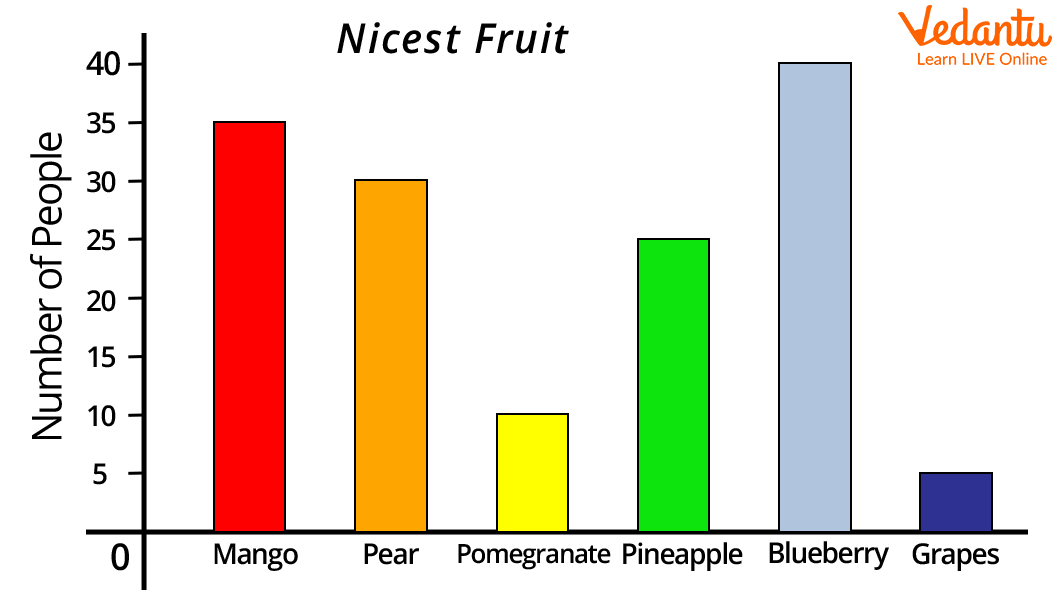If you happen to be viewing the article Horizontal Bar Graph? on the website Math Hello Kitty, there are a couple of convenient ways for you to navigate through the content. You have the option to simply scroll down and leisurely read each section at your own pace. Alternatively, if you’re in a rush or looking for specific information, you can swiftly click on the table of contents provided. This will instantly direct you to the exact section that contains the information you need most urgently.
Have you heard the term Bar graph horizontal or horizontal bar graph? A horizontal bar graph or bar graph horizontal is nothing but a way to represent data horizontally in a graph using bars. In horizontal bar graphs, we represent data categories on the x-axis whereas data values are on the y-axis. Horizontal bar graphs are generally used to compare different observations. Read the article below to have detailed information on Bar Graph Horizontal with interesting examples.
Contents
What is a Bar Graph?
Let us first know what a bar graph is, before knowing the horizontal bar graph in detail.
A bar graph, also known as a bar chart, is a graphical representation of data using bars of different heights.
Imagine you did a survey of 145 people to know which type of fruits are most liked by people.
On the bar graph, we can show this information as:
Image: Bar graph of fruits
A bar graph is an optimum way to show relative size. For example, in the above bar graph, we can say blueberries are most liked by the people whereas grapes are least liked by the people.
Types of Bar Graph
There are two different types of bar graphs namely:
-
Horizontal bar graph and
-
Vertical bar graph
In this article, we will discuss horizontal bar graphs in detail.
What Does Horizontal Bar Graph Mean?
A horizontal bar graph or bar graph horizontal is a way to represent data horizontally in a graph using bars. In horizontal bar graphs, data categories are represented on the x-axis whereas data values are represented on the y-axis. Horizontal bar graphs are widely used for easy and quick comparison among various observations based on certain parameters. In horizontal bar graphs, the length of the rectangular bars is proportional to their values. Also, all bars in the horizontal bar graph go from left to right.
How to Construct a Horizontal Bar Graph?
Following are the steps to construct a horizontal bar graph:
Step 1: On a graph paper, draw two perpendicular lines intersecting at O.
Step 2: The horizontal line on the bar graph is the x-axis whereas the vertical line on the bar graph is the y-axis.
Step 3: Along a horizontal axis, choose a suitable scale in order to determine the height of the bar for the given values (frequency is represented along the y-axis).
Step 4: Along a vertical axis, choose the uniform width of the bar, and uniform gap between the bars. Also, write the name of the data items whose values are to be marked.
Step 5: Calculate the height of the bar according to the value chosen for each graph and draw the horizontal bars accordingly.
Step 6: Give a suitable title to the graph.
The horizontal bar graph given below gives the information about temperature in celsius on different days of the week.

Image: Horizontal bar graph showing maximum temperature in a week
How to Read a Horizontal Bar Graph?
The horizontal bar graph is ead in the following manner:
-
The title of the bar graph tells about the data being represented by the graph.
-
The vertical axis of the horizontal bar graph represents the data categories. The data categories in the horizontal bar graph given below are “colours”.
-
The horizontal axis of the horizontal bar graph represents the values corresponding to each data value. The data values in the below horizontal bar graph represent the number of students who like a particular colour represented on the vertical axis.
-
The scale is showing the value of 1 unit on the horizontal axis.

Image: Reading horizontal bar graph
From the above horizontal bar graph, we can infer that 1 unit represents 5 students. Accordingly, 10 students like the red colour, 5 students like the yellow colour, 20 students like blue colour, and 15 students like the green colour.
Horizontal Bar Graph Example
Let us understand the horizontal bar graph with an example:
Draw a horizontal bar graph on the basis of the following data.

Image: A bar graph showing subjects and the number of students who passed
The horizontal bar graph gives the following information:
-
The total number of students passed in different subjects.
-
The maximum number of students passed in Music.
-
The minimum number of students passed in English and Maths.
-
Students scored highest marks in Music but scored worst in English and Maths.
Hope you have understood what a horizontal bar graph is, and how to read and represent a horizontal bar graph. Now, you can visit Vedantu’s official website and try different questions based on this to understand the concept better.
Thank you so much for taking the time to read the article titled Horizontal Bar Graph written by Math Hello Kitty. Your support means a lot to us! We are glad that you found this article useful. If you have any feedback or thoughts, we would love to hear from you. Don’t forget to leave a comment and review on our website to help introduce it to others. Once again, we sincerely appreciate your support and thank you for being a valued reader!
Source: Math Hello Kitty
Categories: Math

